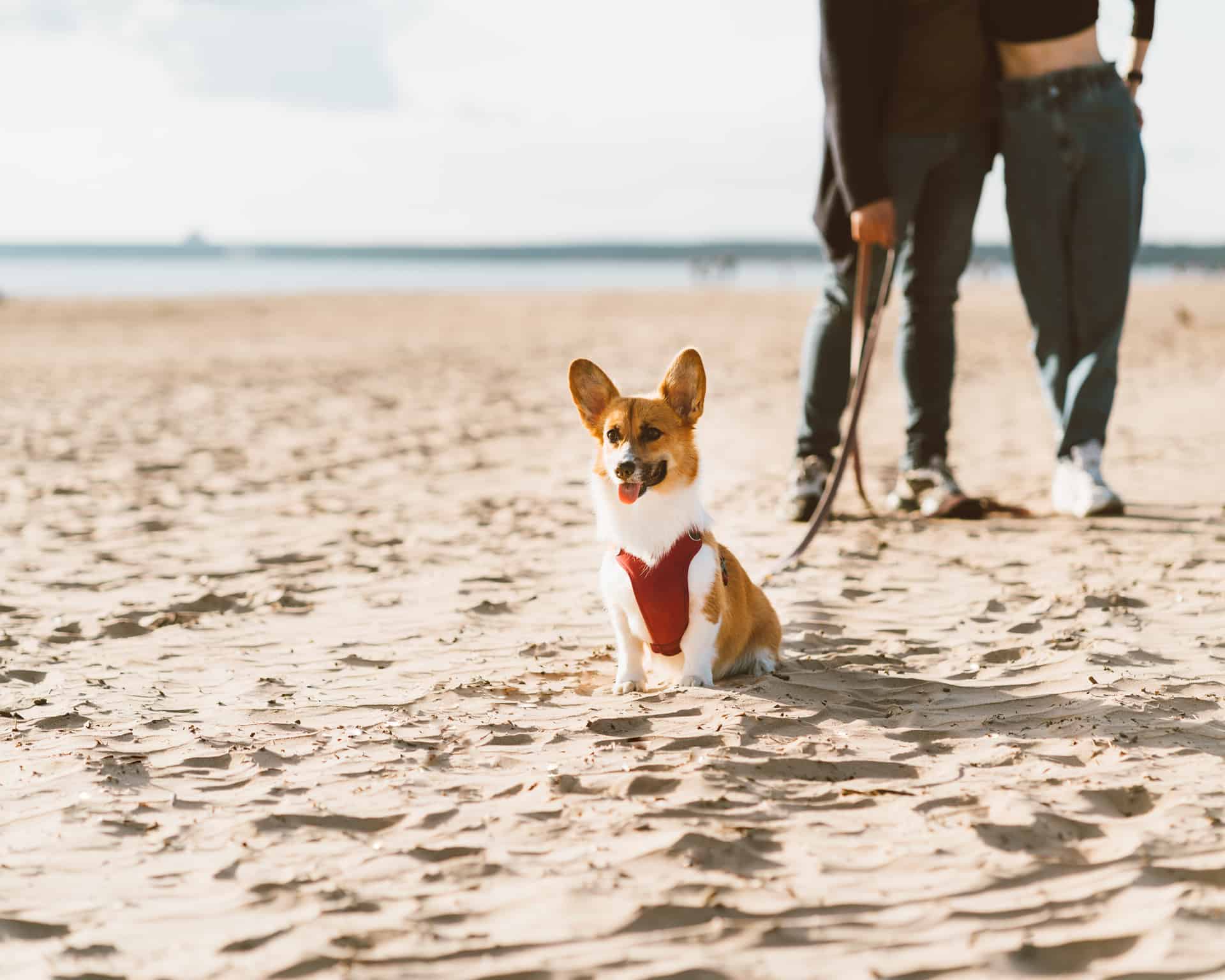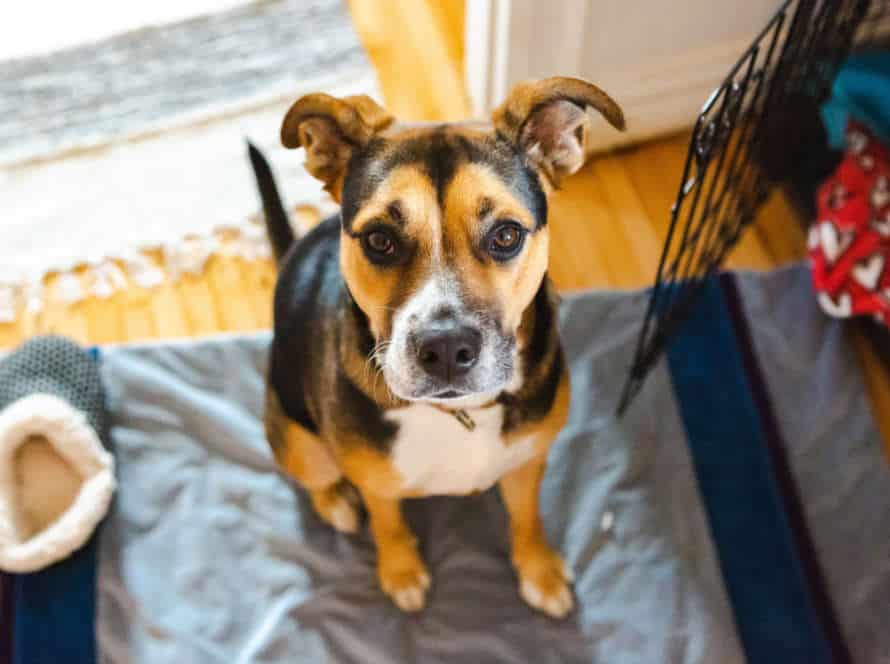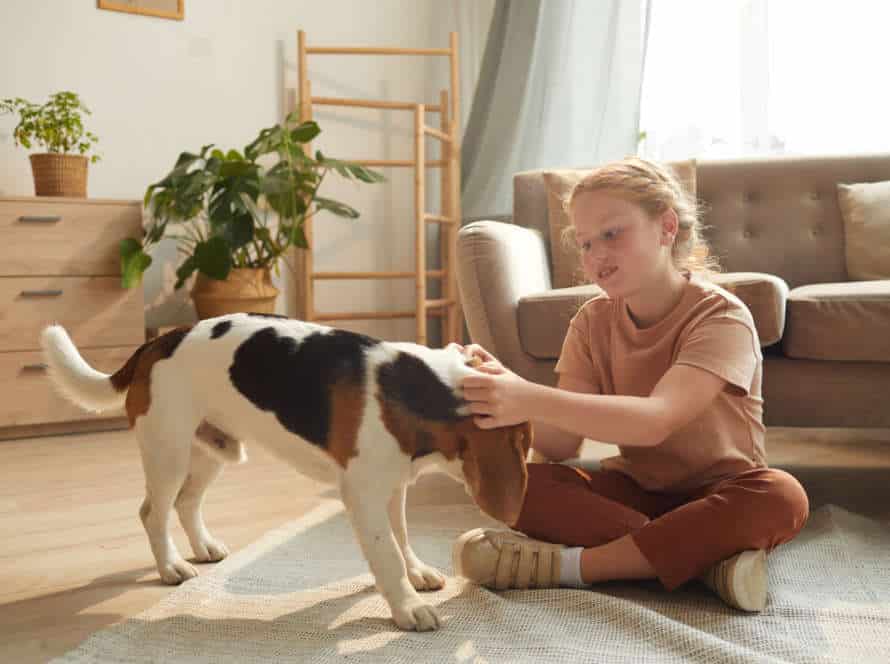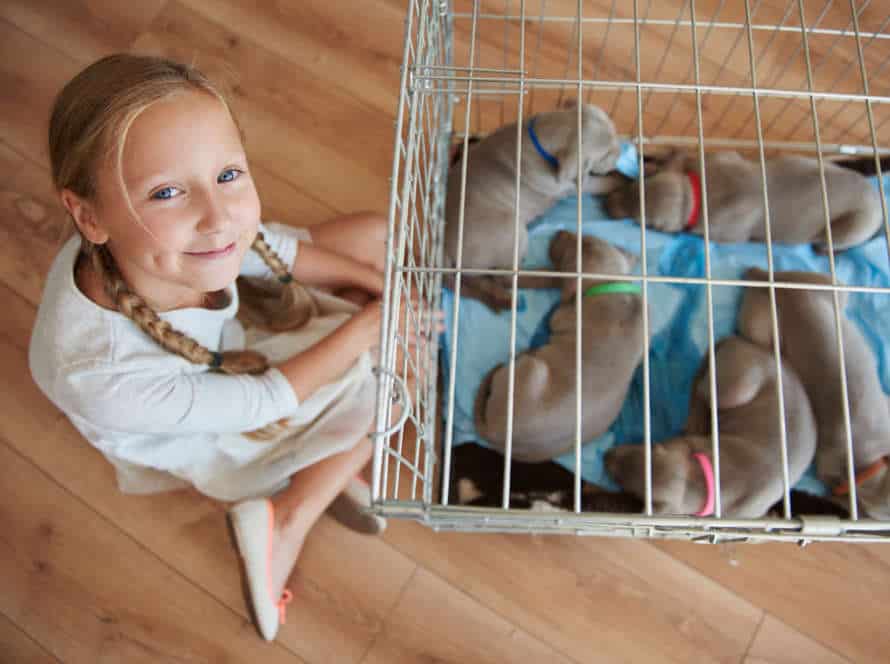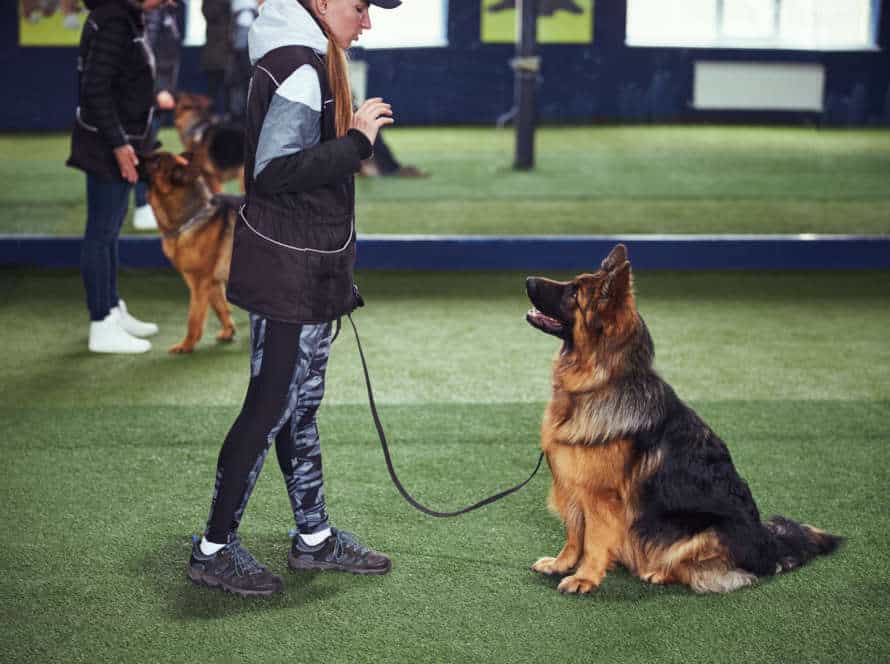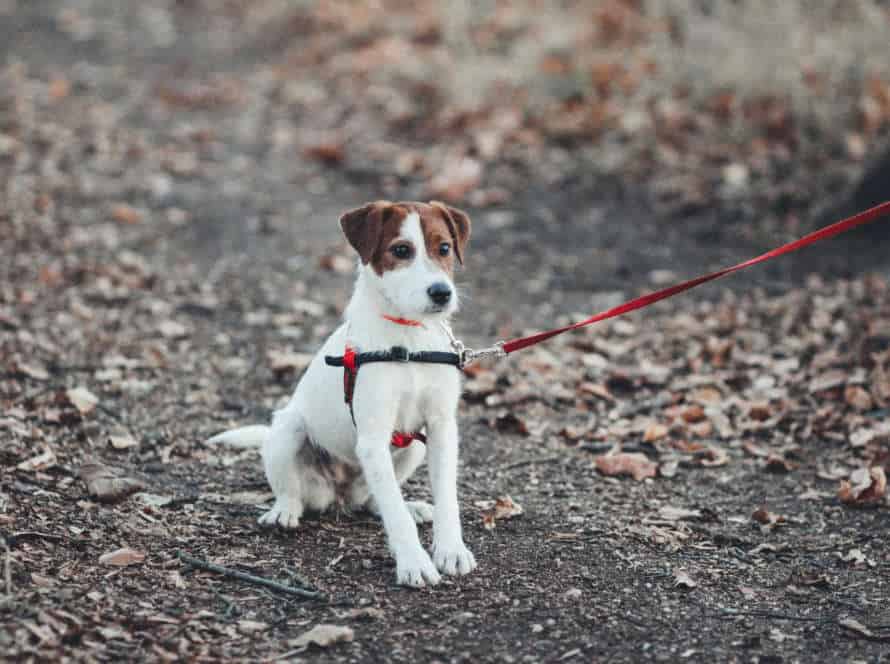How to Handle Leash Training Setbacks: Building Resilience in Your Dog
Dogs can get frustrated when leash training isn’t going well. As an owner, you can help them overcome these challenges. Here are some tips:
- Stay Calm: Stay relaxed when your pup hits a snag. They’ll feel more secure if you do.
- Short Sessions: Try shorter training sessions. It’s easier for your pup to learn and progress.
- Set Goals: Make sure your goals for your pup are realistic. Don’t put too much pressure on them.
- Celebrate: Make sure to celebrate successes, no matter how small. This will build their confidence.
With patience and consistency, your pup will get better at leash training. They’ll become more confident and sociable.
Understanding Leash Training Setbacks
Leash training can be tough! Not only for dog owners, but their fur babies too. Setbacks are part of the process. Don’t worry – they don’t mean your pup is dumb or stubborn. It’s a chance to learn more about your pup and become more resilient. Here’s how to get through leash training setbacks:
What is leash training?
Leash training is teaching pups to walk calmly and obey commands while held with a leash. It takes patience and consistency from the pet owner. It helps maintain control, keep them safe and promote good behavior.
Setbacks can happen while leash training. Patience is key and don’t give up! Pulling, aggressive behavior or distractions can occur and frustrate both owner and pup.
Try a new routine, use positive reinforcement and get help from a pro trainer. Remember setbacks are natural and building resilience in your pup needs effort and dedication.
Common leash training setbacks
Leash training a pup requires patience, consistency, and understanding. Dog owners may face setbacks while teaching their doggos to be leash-friendly. By realising these issues and finding out how to manage them, owners can assist their pooches to be strong and keep making progress with their leash training.
Here’s some common difficulties and how to cope:
- Pulling on the leash: Stand still until your pup stops pulling. Use a stern voice to order them to sit and wait ’til they obey before you carry on walking.
- Barking or lunging: Stay chill, and attempt to divert your pup’s focus with a treat or another command. Do desensitisation exercises to help your pup become accustomed to other dogs or distractions.
- Fear or anxiety: Slow down, take breaks, and build up confidence through positive reinforcement and rewards. Talk to a professional dog trainer or behaviourist if needed.
Remain consistent in your training and be tolerant with your pup as they learn new behaviours. Pro Tip: Don’t forget to praise and reward good behaviour to reinforce positive habits.
Why setbacks happen in leash training
Setbacks in leash training can happen for a few reasons. It’s important to understand why they occur to handle them effectively and help your dog build resilience.
- Lack of consistency can lead to confusion and frustration.
- Distractions such as smells, sounds and other stimuli can cause your pup to pull or act out.
- Fear or anxiety might be caused by a bad experience while on a leash.
- Health issues like pain, injuries or illnesses can make it difficult for your dog to walk comfortably.
Identify the cause of a setback and adjust your plan. Reinforce good leash behavior with treats and praise to build positive associations.
Strategies for Managing Leash Training Setbacks
Leash training can be tricky, with setbacks. Remember, these are part of the learning process. You can help build your pup’s resilience with patience and consistency. Here are some strategies to manage leash training setbacks and help them become champions.
Stay Calm and Positive
Leash training is vital for any pup. Hiccups along the way are to be expected. Keeping chill & upbeat is key in navigating these issues & bolstering your furry pal’s mettle. Here’s how:
- Take a breather: Both you & your doggo getting frustrated with training? Have a quick break to chill & reset.
- Reward minor successes: Even if your pup didn’t act perfectly during the session, recognize & reward any progress.
- Positivity reinforcement: Use treats & praise to promote good behavior & discourage the bad.
- Patience: Training takes time & patience. Setbacks are ok. Stay calm & keep going, celebrating the successes!
Consistency and Repetition
Consistency and repetition are the key for managing leash training issues and improving your pup’s resilience. Here’s how to properly use them:
Consistency: Utilize the same commands, rewards, and consequences each time you take your pooch out for a stroll. This will help them comprehend what is anticipated of them and strengthen good manners.
Repetition: Exercise leash training in short but frequent sessions, slowly increasing the length of your walks as your pup becomes more comfortable with it. This repetition will help your dog create good habits and become more confident on the leash.
Always have patience and be positive with your pup during the training process. With consistency and repetition, your canine pal will soon be confidently walking on the leash.
Break Down Training Goals into Smaller Achievable Steps
Breaking your pup’s leash training goals into smaller, achievable parts is a vital strategy for handling difficulties and building resilience in your furry friend. Here’s an example with steps:
Goal: Your pup walks calmly on a leash without pulling or getting distracted.
- Step 1: Get them used to wearing a collar or harness.
- Step 2: Let them sniff and get comfortable with the leash.
- Step 3: Attach the leash to their collar or harness. Let them drag it around the house.
- Step 4: Practice walking them indoors or in your yard. Reward them when they walk calmly.
- Step 5: Gradually increase the distance and length of your walks.
Remember, training takes time and patience. Give small rewards along the way to keep your pup motivated and build their confidence. Pro Tip: Always finish training with a positive note, even if it’s tiny!
Building Resilience in Your Dog
Leash training can be hard for both pup and owner. But, with a bit of perseverance it doesn’t have to be! Building resilience in your pup takes time, dedication – and lots of patience. Here are some tips to help:
- Be patient and encouraging.
- Reward good behaviour.
- Start with short and simple walks.
- Set realistic goals.
- Take time to relax and play together.
- Be consistent with commands.
- Be willing to take a break if needed.
These tips will help you and your pup build resilience during leash training, and it’ll be worth it in the end!
Support Your Dog’s Emotional Needs
Dogs have emotional needs. Supporting these helps build their resilience. Here are tips:
- Give them a secure, comfortable home. Bed, safe spaces and routines promote good behavior and reduce anxiety.
- Build a strong relationship. Bonding activities like playtime, training and socialization help.
- Stimulate them. Mental and physical stimulation builds resilience and manages stress. Socializing, learning commands and taking them for walks/runs helps.
- Be patient and positive. Positive reinforcement techniques support their emotional needs and encourage good behavior. For example, offer words of praise and treats during leash training.
These tools and techniques help your dog to be resilient, stay positive and stay healthy.
Practice Exposure Therapy
Exposure therapy is a great way to help your pup build resilience with leash training. It’s all about exposing your dog to the things that make them scared, stressed or anxious. And then rewarding them when they act bravely!
A few tips:
- Go slowly and gradually increase the intensity.
- Offer treats, toys and praise as rewards when they act positively.
- Take frequent breaks and don’t overwhelm them.
- Stay calm and never punish them for being scared.
With patience and practice, exposure therapy can help your pup become more confident during leash training set-backs.
Incorporate Positive Reinforcement Techniques
Positive reinforcement is a great way to help your pup build up resilience during leash training. Here are some tips:
- Reward them when they follow commands. Treats are great!
- Take a break if they get irritated.
- Stay chill. Your pup can sense your emotions.
- Set goals that are achievable.
- Celebrate the small wins. It’ll encourage them to keep going.
By using positive reinforcement, your pup will be more resilient during leash training, and this will help in other areas too!
Common Leash Training Scenarios and Solutions
Leash training is a must if you want your dog to be well-behaved. Consistency and vigilance are key. Setbacks and challenges can arise. We’ll look at common scenarios and solutions. To teach your pup obedience, use the strategies we provide!
Pulling on the Leash
Do you struggle with leash training your pup? Here are the most typical scenarios and tips to help you.
Scenario 1: Your dog lunges at other animals or people while you’re walking.
Solution: Keep their attention with high-value treats, distract them with toys, or have them ‘check-in’ with you.
Scenario 2: Your dog pulls towards something they want.
Solution: Stop and wait until they’re calm. Reinforce this behavior so they know pulling won’t work.
Scenario 3: Your dog won’t move or pulls in the opposite direction.
Solution: Change directions or lure them with treats. If they still won’t move, end the walk and try again later.
With these tips, you can have stress-free walks with your pup!
Barking and Lunging at Other Dogs
Barking and lunging at other pups while on a leash is a challenge many pet owners face. But, with the right approach and training, it can be solved.
Let’s look at some common issues and their solutions:
Scenario 1: Your pooch gets angry near other dogs while leashed.
Answer: One way to fix this is to get your pup to focus on you instead of others. Use rewards like treats and verbal praise to reward good behavior.
Scenario 2: Your pup pulls on the leash and won’t walk.
Solution: Start by teaching your pup to walk on a loose leash. Offer treats or say a cue to get your pup to walk by you. If it pulls, stop and wait until it’s calm before continuing.
By giving your pup regular training, patience, and positive reinforcement, you can help them become a well-behaved and obedient companion.
Fearful or Reactive Behavior Towards Leash Walking
Many pet owners experience fearful or reactive behavior when leash walking their furry friends. Here are some common scenarios and solutions to help you handle these setbacks:
- Scenario 1: Your pup pulls aggressively in strange places? Fear or anxiety could be the cause. Create a relaxed atmosphere and use positive reinforcement techniques.
- Scenario 2: Does your pup become anxious around others? Give them space and reward good behavior.
- Scenario 3: Problems with the collar or harness? Time to switch to something more comfortable and secure.
Patience and perseverance will help build resilience and confidence in your pup. Don’t lose hope!
Preventing Future Leash Training Setbacks
Leash training your pup can be hard. You may think progress is too slow. To ensure success in the future, take these steps to prevent issues:
- Have patience.
- Break goals into small, achievable steps.
- Offer rewards for good behavior.
- Make sure your pup gets enough exercise.
- Remain consistent.
Continue Ongoing Training and Reinforcement
Consistent training and positive reinforcement is important to prevent future leash training issues and build your dog’s resilience. Here are some tips to help:
- Make time for regular practice. Use a mixture of rewards like treats or verbal praise.
- Take it slow. Increase distance and time gradually, not suddenly.
- Offer treats, praises, or games when they do well.
- Have patience. Every pup learns in their own way, don’t punish mistakes.
Practicing these steps can help your pup stay on track and become stronger against issues.
Keep Your Dog Physically and Mentally Stimulated
Keep your pup active and engaged! Regular walks, fetch, agility classes, puzzle toys, hide-and-seek, and teaching new tricks are great ways to stimulate them physically and mentally. Socializing with other dogs and people helps too. Feeding them a balanced diet supports their health and energy levels. Doing these activities can make leash training easier and help their wellbeing. Remember to always supervise your dog and adjust as needed.
Pay Attention to Your Dog’s Overall Health and Well-being
To stop leash training problems in the future, it is essential to look after your dog’s health. How your pup feels can affect their actions and learning capacity, so take care of them in every way you can.
Here are some tips:
- –Regular exercise. A fit dog is probably calmer and simpler to educate. Make sure your pup gets enough exercise by taking them on daily walks or runs.
- –Nutritious diet. An appropriate diet will give your dog the nutrients they require to stay healthy mentally and physically. Be sure they get the right amount of proteins, vitamins, and minerals from their meals.
- –Mental stimulation. A bored dog might not be keen on being trained. Keep them entertained with toys, puzzles, and playtime.
- –Regular check-ups. Book yearly vet visits to make sure your pup is in tip-top condition. Any health worries can be identified earlier and treated before they become serious issues influencing the pup’s behavior and training.
Looking after your pup’s wellbeing has many advantages that can help them to stay concentrated and able to learn more efficiently.
Frequently Asked Questions
1. What is leash training?
Leash training is the process of teaching your dog to walk calmly and respectfully on a leash, while maintaining proper behavior and following your lead.
2. What are typical setbacks in leash training?
Typical setbacks in leash training include pulling, lunging, jumping, and barking. Other challenges can include distractions, fear, and anxiety.
3. How do I handle setbacks in leash training?
To handle setbacks in leash training, it’s important to remain calm, patient and positive. Increase training and practice in less distracting environments, use positive reinforcement, and consider consulting a professional trainer for additional support and guidance.
4. How long does leash training take?
The length of time it takes to leash train a dog depends on several factors, including the dog’s age, temperament and experience. Consistent training and patience are key to achieve success.
5. How can I build resilience in my dog during leash training?
To build resilience in your dog during leash training, gradually expose them to new environments and situations, use positive reinforcement, and focus on consistency and repetition in training.
6. Can I use punishment during leash training?
No. Punishment, such as yelling or hitting, is not an effective or humane way to train a dog. Positive reinforcement, such as treats and praises, are better ways to encourage good behavior during leash training.

